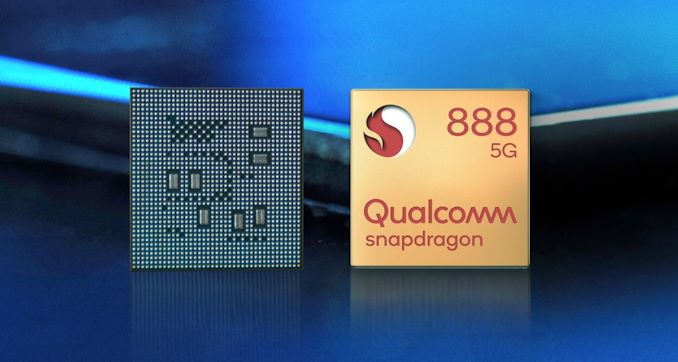The Qualcomm IPQ5018 is a Wi-Fi 6 (802.11ax) System on Chip (SoC) designed for high-performance routers, gateways, and mesh networking applications. It supports dual-band (2.4GHz and 5GHz) Wi-Fi, features advanced technologies like OFDMA and MU-MIMO, and includes a high-performance ARM Cortex-A53 CPU. It's typically used in mid to high-end wireless routers, offering efficient handling of multiple connected devices.
If you're looking for equivalent ICs or SoCs to the Qualcomm IPQ5018, there are several options from different manufacturers offering similar features, such as Wi-Fi 6 support, multi-core CPUs, and advanced wireless capabilities. These alternatives are commonly used in WiFi 6 routers and mesh systems.
1. Broadcom BCM4908
Type: Wi-Fi 6 SoC
Features: The BCM4908 is a quad-core ARM Cortex-A53 processor-based SoC, similar to the IPQ5018. It supports Wi-Fi 6 (802.11ax) and is optimized for dual-band (2.4GHz and 5GHz) operation, with features like OFDMA, MU-MIMO, and high-speed data throughput.
Application: Typically used in high-performance routers, gateways, and mesh systems.
Advantages: Broadcom is well-known for its wireless chipsets, and the BCM4908 is widely used in both consumer and enterprise-grade networking devices.
2. MediaTek MT7622
Type: Wi-Fi 6 (802.11ax) Chipset
Features: The MT7622 SoC integrates an ARM Cortex-A53 CPU and provides support for dual-band Wi-Fi (2.4GHz/5GHz), as well as OFDMA, MU-MIMO, and other Wi-Fi 6 technologies. It's designed to handle the demands of next-gen wireless networking with a focus on performance and scalability.
Application: Used in consumer routers, mesh networking, and home gateways.
Advantages: MediaTek’s solutions are often more cost-effective while still providing solid performance in Wi-Fi 6-enabled devices.
3. Qualcomm IPQ6010
Type: Wi-Fi 6 SoC (from the same family as IPQ5018)
Features: The IPQ6010 is another SoC in Qualcomm’s IPQ series. It supports Wi-Fi 6 (802.11ax) with enhanced features for dual-band operation (2.4GHz and 5GHz), as well as OFDMA, MU-MIMO, and high-speed processing. It has an ARM Cortex-A53 CPU like the IPQ5018 but is typically used in a slightly higher-tier application, such as higher-performance routers or mesh networks.
Application: Ideal for high-performance, enterprise, and consumer-grade routers, mesh systems, and Wi-Fi 6 gateways.
Advantages: Offers high data throughput and efficient Wireless Communication in demanding environments.
4. Intel Home Wi-Fi 6 (MGW) Series – Intel Home Wi-Fi Chipset (for example, Intel WAV500 series)
Type: Wi-Fi 6 SoC
Features: Intel's WAV500 series provides Wi-Fi 6 support with dual-band (2.4GHz and 5GHz) operation and is designed for both consumer routers and mesh networking systems. These chipsets include advanced Wi-Fi technologies like OFDMA, MU-MIMO, and BSS Coloring.
Application: Targeted at home and small office networking devices, including routers and gateways.
Advantages: Intel's solutions are known for solid integration, high throughput, and low latency, particularly for home networking.
5. Broadcom BCM6755
Type: Wi-Fi 6 SoC
Features: The BCM6755 is a quad-core ARM Cortex-A53 SoC similar to the IPQ5018 and is designed for Wi-Fi 6 applications. It supports dual-band Wi-Fi (2.4GHz and 5GHz) and integrates advanced features like OFDMA and MU-MIMO for optimized wireless performance.
Application: Used in a range of high-performance Wi-Fi 6 routers, mesh networks, and access points.
Advantages: Broadcom provides extensive ecosystem support, making its solutions suitable for high-volume consumer and enterprise applications.
6. Marvell 88W9068
Type: Wi-Fi 6E SoC
Features: The 88W9068 is part of Marvell’s Wi-Fi 6 and Wi-Fi 6E solutions, supporting tri-band (2.4GHz, 5GHz, and 6GHz) operation, with advanced Wi-Fi 6 features such as OFDMA, MU-MIMO, and enhanced throughput for high-density environments.
Application: Used in high-performance mesh routers, gateways, and access points.
Advantages: Marvell’s solutions are highly scalable and well-suited for high-performance and enterprise-level networking applications.
7. Realtek RTL8197F
Type: Wi-Fi 6 SoC
Features: The RTL8197F supports Wi-Fi 6 (802.11ax) technology, offering dual-band support (2.4GHz and 5GHz), and integrates multiple advanced features such as OFDMA, MU-MIMO, and BSS Coloring for efficient wireless networking.
Application: Typically used in consumer routers, gateways, and mesh networks.
Advantages: Realtek provides cost-effective solutions without compromising on essential Wi-Fi 6 features.
Key Similarities:
Wi-Fi 6 (802.11ax): All of these chips support Wi-Fi 6 standards, including OFDMA, MU-MIMO, and BSS Coloring, enhancing overall network efficiency, especially in environments with many connected devices.
Dual-Band Support: Most of these alternatives offer dual-band (2.4GHz and 5GHz) or even tri-band (2.4GHz, 5GHz, and 6GHz) support, allowing them to provide high throughput in diverse applications.
CPU Integration: These chips typically include an ARM Cortex-A53 or similar multi-core CPU, enabling them to handle the data processing and complex tasks needed for modern networking environments.
Conclusion:
The Qualcomm IPQ5018 has several strong equivalents, primarily from manufacturers like Broadcom, MediaTek, Marvell, and Realtek. These alternatives also provide high-performance Wi-Fi 6 solutions for routers, gateways, and mesh networks, with similar capabilities in terms of OFDMA, MU-MIMO, and high-speed operation. The choice of equivalent chip depends on specific application requirements such as price, performance, and feature set.
Other

What is HBM (High Bandwidth Memory)?
2024.09.05

What is Antenna Tuner IC?
2024.09.20

What’s the Difference between LPDDR and DDR?
2024.09.25

Snapdragon 888 5G Mobile Platform
2024.09.26

What is WiFi 6E?
2024.09.26

What is Bluetooth Audio SoC?
2024.09.26

What's HBM3E (High Bandwidth Memory 3)?
2024.09.26

What is an Audio Codec?
2024.10.09





